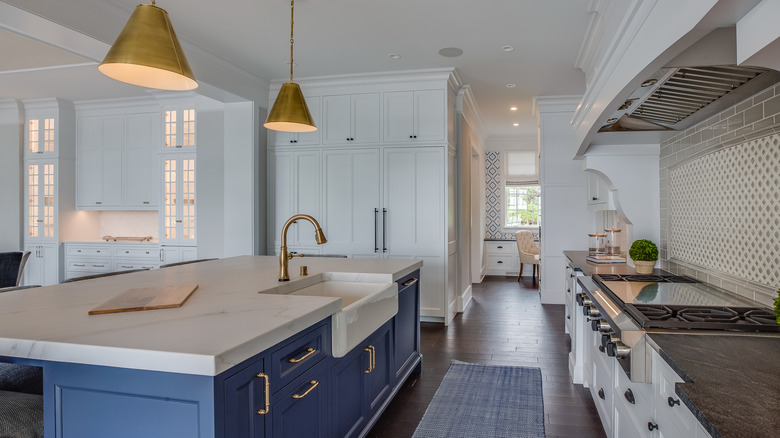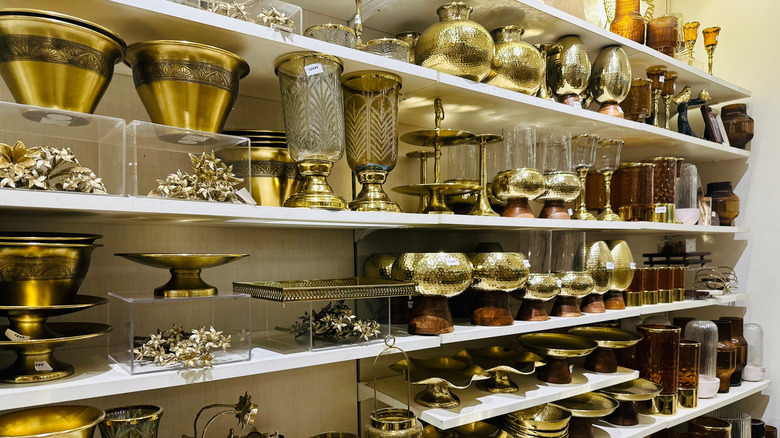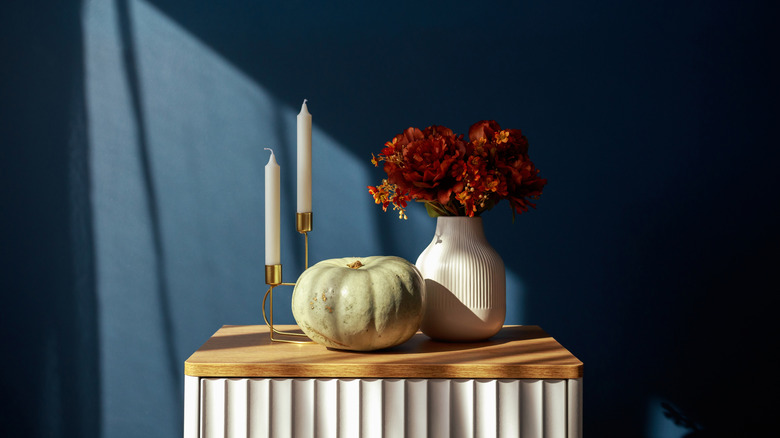The Timeless Vintage Decor Everyone Wants To Get Their Hands On At The Thrift Store In 2025
A staple of 1980s and 1990s home décor, brass finishes are coming back in style, just like many decor trends that come and go. Despite falling out of favor for a time, brass creates some of the most timeless vintage décor, and everyone wants to get their hands on it at the thrift store in 2025. This metal alloy has experienced a resurgence in popularity over the last several years, and vintage brass items are a great find at secondhand shops, garage sales, antique stores, and flea markets.
Brass adds warmth and a touch of luxury to any room in your home. That warmth complements the natural wood tones and warm color palettes that are currently popular in home décor. Brass fixtures, lighting, and accent items are available in a range of styles, from rustic to contemporary.
If you want an affordable way to add the warm metal to your home décor, you can find a wide variety of brass items at thrift shops. Buying secondhand often means lower prices, and the brass pieces you find will be unique since you're buying from a secondhand shop and not a mass retailer. The older pieces add extra charm with a natural patina that amplifies the vintage tone. When shopping for brass at thrift stores, it is helpful to know what to look for and how to tell real brass apart from brass-plated objects that are made from cheaper base metals.
Identifying brass items at the thrift store
The look and feel of an object can give important clues about the metal content. Real brass has more weight than plated objects. If the piece feels heavy, it is likely real brass, but it if feels light for its size, you might want to pass — it's like just a brass plating over the object. The color is another clue. Real brass develops a patina over time that will give it a rich gold appearance. If the brass appears too shiny or flat, it may not be real. Another clue that you're holding a brass-plated item is flakiness where the outer layer is peeling off.
Other marks and symbols of craftsmanship can help you tell real brass from silver-plated fake brass. Check for engravings with the country of origin, usually found on the bottom of a piece of brass. Some items may be stamped with "Solid Brass." Real brass is generally crafted in one piece without seams. If the item has seams, it may not be real.
When you are in a thrift store, you can't perform extensive testing to evaluate the authenticity of brass. The easiest way to decide is to use the magnet trick to determine if something is real brass. Real brass isn't magnetic, so if the magnet sticks, it is plated and not authentic brass. After you get the items home, you can do other tests, such as a scratch test on an inconspicuous area. If you scratch brass and see silver, it isn't genuine brass.
How to use thrifted brass around the house
Brass has endured for centuries because of its workability and versatility — it can be formed into virtually any shape. You can use brass to give your home a touch of old-world charm with unique fixtures. This metal alloy is commonly used in light fixtures, such as chandeliers and ceiling light fixtures, table lamps, and floor lamps. Other common uses include cabinet doorknobs and drawer pulls, mirrors, book ends, sculptures, and small figurines.
When shopping for brass, start by determining the finish that works best for your home décor and personal preferences. The highly polished brass common in the 1980s and 1990s isn't the only option. There are several types of brass finishes, including polished brass, antique brass, unlacquered brass, and satin or brushed brass. Antique brass or unlacquered brass, which has a natural patina, adds character and charm to any room. It's a good idea to wipe your new-to-you brass items before adding them to your room. You can decide if you want to leave them as-is with the patina or use brass polish to bring back some shine.
Brass works well alongside other metals, as well as matte black and natural wood objects and accents. Whether you use brass in the kitchen, bathroom, or dining room, don't overdo it. Brass works best when used strategically and sparingly rather than dominating the space. You might start with a few decor pieces to figure out how brass will fit into your space and add more as you collect new thrifted treasures.


